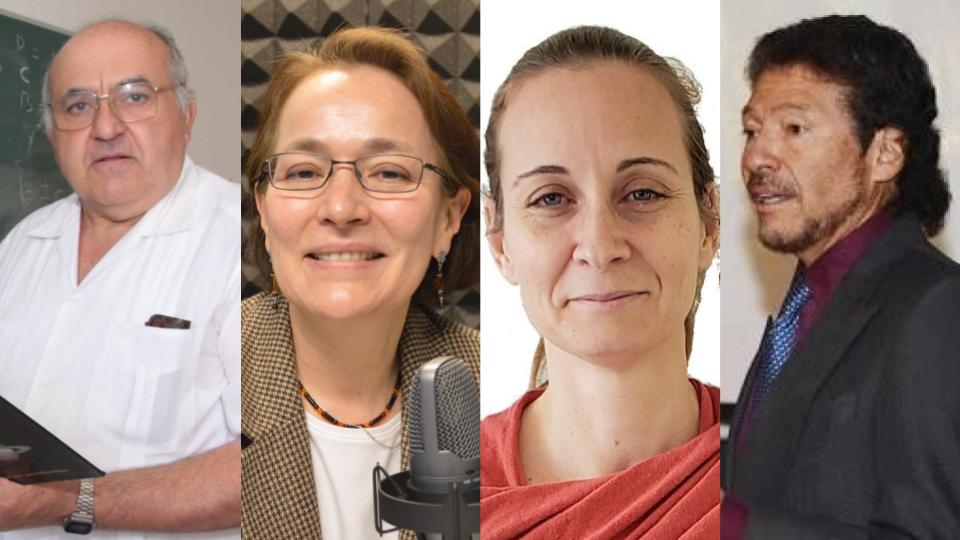During 2021 four researchers from the Instituto de Radioastronomía y Astrofísica (IRyA) at UNAM, Campus Morelia, received national an international awards for their careers and academic work. The awardees highlighted that these prizes are an incentive to continue with their research and also help motivate younger generations to pursue basic science in Mexico, even with the difficulties that they may face in our country.

Dr. Luis Felipe Rodríguez Jorge, an UNAM Professor Emeritus at IRyA, received the famous 2021 Karl G. Jansky Lectureship last June, from the National Radio Astronomy Observatory (NRAO) and Associated Universities, Inc. (AUI), from the United States. In Mexico, Dr. Susana Lizano Soberón, also an UNAM Professor Emeritus at IRyA, received the Crónica 2020 prize in the area of Science and Technology in October, from the Editorial Committee of the Mexican news media company La Crónica de Hoy.
Also, Dr. Omaira González Martín, a researcher at IRyA, received the National University Distinction for Young Academics Award 2021, while Dr. Enrique Vázquez Semadeni, also a researcher at IRyA, received the National University Prize 2021. These accolades were awarded by UNAM, both for their research in Exact Science.
“To receive this Lectureship is a great satisfaction to me”, said Dr. Luis Felipe Rodríguez in an interview. “Jansky was the father of radio astronomy and as radio astronomers we venerate him. We measure things in the sky in units of Janskys in his honor. It is a great pleasure and I thank my collaborators for their work, reflected in this recognition”.
“For our Institute it is very important that Dr. Luis Felipe obtained this Lectureship in the USA”, said Dr. Luis Alberto Zapata, director of IRyA. “This Lectureship is given to outstanding astronomers from all over the world”.
Dr. Rodríguez commented that he feels “very happy to receive this Lectureship. I thinks it is a great incentive to younger radio astronomers in Mexico. In the NRAO building in Socorro, New Mexico, there is a hall where the photographs of past winners hang, and I am excited to see myself among them next time I go there”.
Similarly, Dr. Enrique Vázquez said that receiving the National University Prize is something that he “longed for years, and I finally achieved it. During this time I saw several of my professors and most admired colleagues get it, and internally I dreamt of fulfilling the merits needed to obtain it”.
“It is also a motivation to continue doing research, and passionately”, said Dr. Vázquez. “Obtaining these very valued recognition does not mean that research work is now finished. On the contrary, it goes on along my students and collaborators”.
“This is one of the most motivating and challenging aspects of scientific pursuit”, asserted Dr. Vázquez: “for each answer you find to a problem about how nature works, you generate new questions and realize that, as Socrates said, the more you know about something, the more you realize how much you have still to know.”
On receiving the National University Distinction for Young Academics Award, Dr. Omaira González thanked the astronomical community at UNAM and in Mexico for their willingness to collaborate in new initiatives to strengthen Mexican Science. “I particularly want to thank the networks of researchers in Mexico within my research area, who welcomed me from the beginning and with whom we have developed research at the frontier of knowledge”, she said.
“It really is an honor to received this prize”, said Dr. González. “I started at IRyA in 2014 with the firm purpose of opening a new research line. It was not a new line in Mexico, but it was at IRyA. Without the support of the Institute I would never have developed this line of research in such a short time”
Dr. Zapata proposed Dr. González to receive this recognition amongst other candidates. “I was surprised to get this award, there is no doubt about that”, said Dr. González, “because I know the high level of the other candidates. These generation of young scientists will strengthen Mexico because Science is fundamental to achieve more equal societies”.
On how important is for Mexico to recognize our own astronomers, Dr. Rodríguez commented: “We are going through a difficult time in Mexico. There is fear and disdain for intellectual things. While in England they bury their great astronomers as national heroes, in Mexico they are criticized. I hope this helps to recognize that there is valuable people in Mexico and that our presence is positive, and national Science growth must be encouraged.”
In a similar note, Dr. Susana Lizano mentioned, while receiving the Crónica prize, that some people criticize the lack of immediate applicability of basic Science. However, “knowledge of nature and the Universe have allowed humans, particularly since the 20th century, to create interconnected societies, defeat many diseases and conquer space. It is important then, to be aware that all this developement and well-being has its origins in basic Science.”
She highlighted that Science has been useful, for example, to combat the Covid 19 pandemic, and that new technologies still need to be developed to confront the climate emergency. “All these technologies will also come from scientific knowledge accumulated over time”, she said, and added: “we are facing complex problems that need us to understand human behaviour and find an adequate way to communicate scientific advances to people, thus combatting magical thinking, conspiracy theories, and misinformation.”
In a similar line, Dr. Zapata recognized the work of the four awardees as promoters of Science and educators of young people in Mexico. Particularly, he highlighted that the Jansky Lectureship awarded to Dr. Rodríguez “is a recognition of his teaching career also, as he as educated a great number of astronomers in Mexico. He has been a great promoter of radio astronomy in our country and is considered the ‘father’ of Mexican radio astronomy. He is the first Iberoamerican person to get it”.
On this topic, Dr. González commented that “in our graduate programs we are giving tools to our students to contribute to an opportunity-based society for future Mexican generations. I particularly proud of my graduate students, both those who have graduated and moved on to postdoctoral positions, and those who are still working everyday with me. I also thank them because their work has made a big contribution to this award”.
Finally, Dr. Zapata mentioned that the four awards are very well deserved, and they are an example of the high quality of academic work performed at IRyA UNAM, Campus Morelia.
Dr. Luis Felipe Rodríguez Jorge career
Dr. Luis Felipe Rodríguez obtained his bachelor’s degree in physics from the Science Faculty of the National Autonomous University of Mexico, and his PhD in aastronomy from the University of Harvard. He is recognised as the instigator of radioastronomy in Mexico.
His research is focussed mainly on the birth and early stages of stars, and he also studies Galactic X-ray sources. Among his contributions, the discovery of bipolar outflows from young stars, the elucidation of the driving mechanism of Herbig-Haro objects, and the detection of protoplanetary disks around young stars, are some of the highlights. This work provides the observational evidence needed to support the idea that young stars are formed surrounded by protoplanetary disks of gas and dust, from which planets will condense, just as must have occurred in our Solar System.
Dr. Rodríguez has received many awards, including the Robert J. Trumpler Prize from the Astronomical Society of the Pacific, the Bruno Rossi Prize from the American Astronomical Society, the Physics Prize from The World Academy of Science (TWAS) and, in Mexico, the Premio a la Investigación Científica given by the Mexican Physics Society, the Premio Nacional de Ciencias y Artes awarded by the government of Mexico, and the Premio Universidad Nacional given by UNAM. He was also elected Foreign Member of the National Academy of Sciences of the USA.
In 2010 he was made Emeritus Researcher and became Doctor Honoris Causa of the National Autonomous University of Mexico for his distinguished scientific career. Dr. Luis Felipe Rodríguez was elected member of El Colegio Nacional of Mexico in February 2000.
Dr. Susana Lizano Soberón career
Dr. Susana Lizano studied for her undergraduate degree in physics at the National Autonomous University of Mexico and did her master’s and doctoral degrees in astronomy at the University of California, Berkeley. She promoted the creation of the Institute of Radioastronomy and Astrophysics (IRyA) and was the director of its predecessor from 2007 to 2011 and 2011 to 2015.
Dr. Lizano is the pioneer of theoretical star-formation studies in Mexico. She has made fundamental contributions to the modern understanding of how stars are born in our Galaxy. She is a specialist in magnetohydrodynamics of the interstellar medium and her research includes theoretical models of the formation and gravitational collapse of the dense cores of dust and gas where stars are formed. She studies the interaction of the bipolar stellar winds that are produced by young stars with the surrounding cloud, and also the protoplanetary disks around these stars, which go on to form systems of planets.
She has received many awards from Mexican and international institutions, including the distinction Reconocimiento Universidad Nacional para Jóvenes Académicos awarded by UNAM, the Premio de Investigación Científica awarded by the Mexican Academy of Sciences, the Premio a la Investigación Científica given by the Mexican Physics Society, the Premio Nacional de Ciencias y Artes awarded by the government of Mexico, and a Guggenheim fellowship.
In 2018 Dr. Lizano was elected member of El Colegio Nacional of Mexico and was made Emeritus Researcher of the UNAM in 2020.
Dr. Omaira González Martín career
Dr. Omaira González-Martín obtained her degree in physics from the University of La Laguna, Spain, and her PhD in astrophysics from the Instituto de Astrofísica de Andalusia (IAA-CSIC) and the University of Granada. She did postdoctoral research at the University of Leicester, the University of Crete and the Instituto de Astrofísica de Canarias. She has been a researcher at the National Autonomous University of Mexico (UNAM) since 2014.
She studies active galactic nuclei, principally in the Local Universe. In particular, she researches the properties of dust associated with these galaxies using advanced statistical techniques applied to large collections of observational data at mid-infrared and X-ray wavelengths.
Currently, Dr. González-Martín is the head of postgraduate studies in the Institute for Radioastronomy and Astrophysics (IRyA) and organizes the AGN group in the institute.
Dr. Enrique Vázquez Semadeni career
Dr. Enrique Vázquez-Semadeni obtained his undergraduate degree in physics from the Science Faculty of the National Autonomous University of Mexico and his doctorate in astronomy from the University of Texas at Austin.
He has made important contributions in the field of Galactic star formation and its relationship to compressible magnetohydrodynamic turbulence in the interstellar medium. He is an expert in the thermodynamics of the interstellar medium and its interaction with supersonic turbulence. He discovered the functional form of the probability distribution of the density field in isothermal compressible turbulence, on which various analytical theories of star formation have since been based. He has studied the life cycle of molecular clouds, from their formation and growth up to the time when they form stars and are finally destroyed by stellar feedback energy, and how this process controls the speed of star formation in galaxies. He is one of the main proponents of a new paradigm for the structure, dynamics and evolution of molecular clouds in which, far from being close to equilibrium, the clouds are in the process of global and hierarchical gravitational collapse.
Dr. Vázquez-Semadeni has received the Jorge Lomnitz Adler prize, awarded by the Institute of Physics of the UNAM, the Premio Estatal a la Investigación Científica y Humanística, awarded by the State of Michoacan, and the Premio a la Investigación Científica, awarded by the Mexican Physics Society. He was Director of the Institute of Radioastronomy y Astrophysics from 2015 to 2019.
About IRyA, UNAM
The Instituto de Radioastronomía y Astrofísica (IRyA), or Institute for Radioastronomy and Astrophysics is an academic unit at UNAM, Campus Morelia, Mexico. We perform high-level and high-impact research in the areas of interstellar medium, star formation, evolved stars, high energy astrophysics, Galactic dynamics and structure, extragalactic astronomy and cosmology. We contribute to the education of high-level human resources through a postgraduate program, and we have close contact with society through diverse outreach programs.
If you are interested in our Institute, visit the English version of our webpage, www.irya.unam.mx/web/en
Media contact:
Dr. René A. Ortega Minakata
Outreach and Science Communication
IRyA UNAM Campus Morelia




